What Aquarium Plants Need CO2?
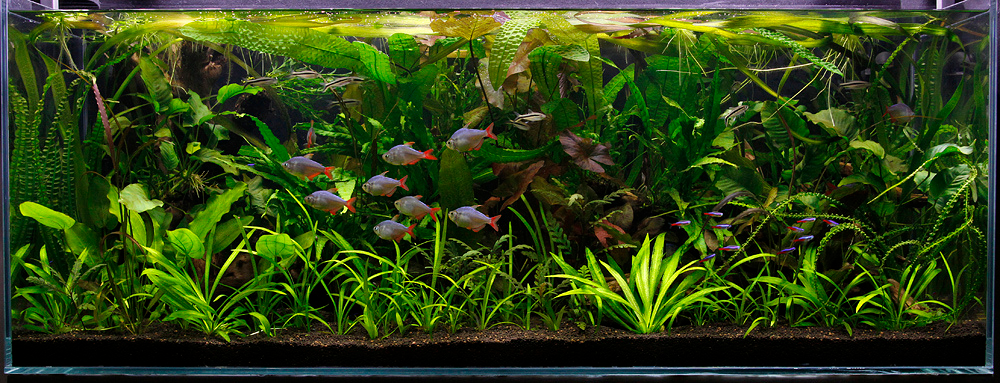
One downside of having no Carbon dioxide supplementation is it allows very little error. A slight increase in the intensity of the lighting can definitely affect optimal plant growth given that there is a very limited supply of Carbon dioxide in the water column. Having no Carbon dioxide supplement in the planted aquariums does not mean that the plants are not using CO2. Technically all aquarium plant/s require Carbon dioxide. And Carbon dioxide is always present in water for as long as the water is moving and there is surface agitation. If there is surface agitation, it means there is gas exchange. If there is gas exchange it means that Carbon dioxide as well as other gas can escape into the atmosphere and some get dissolved in the water. Some carbon dioxide enters the aquarium water from the atmosphere, from fish respiration and from various other microbiological processes that naturally occur in a planted fish aquarium. The main difference between aquatic plants is how much Carbon dioxide each type would require if given their ideal conditions.
Do you need CO2 for a planted tank? Some aquarium plant/s are slow growers and love medium or low lighting. Some aquarium plants are fast growers and would require highlighting . In general, with the exception of a few plants, slow growing, low light-loving varieties like Anubias, Java Fern and Bolbitis would only require very little Carbon dioxide. They can thrive without Carbon dioxide supplementation for as long as the conditions are right. They can just use the Carbon dioxide already present in the water.
Light-loving plants, however, grow faster. They have higher metabolic rates and would require a lot of CO2 to thrive. They are categorised as High tech plants. High tech tanks would mean that the tank would need CO2 supplementation and high lighting while Low tech means that the low tech tank will thrive even without extra CO2 in low light aquariums and needs to be in a low tech tanks. The majority of these plants are found in their emersed form when in the wild. Most stem plants have their emersed form which are totally different in appearance compared to their submersed form.
For those who are new to this, the emersed form of an aquatic plant is the form that they take when they are growing out of water. Oftentimes, the leaves of these forms are a bit smaller and more rigid than the submersed form. Leaf colour also changes when transitioned to the emersed state. Some do not have an emersed form and their appearance when growing submersed would be the same when grown above water. Such is the case for the more commonly known carpeting plants like Monte Carlo and Hemianthus Callitrichoides.
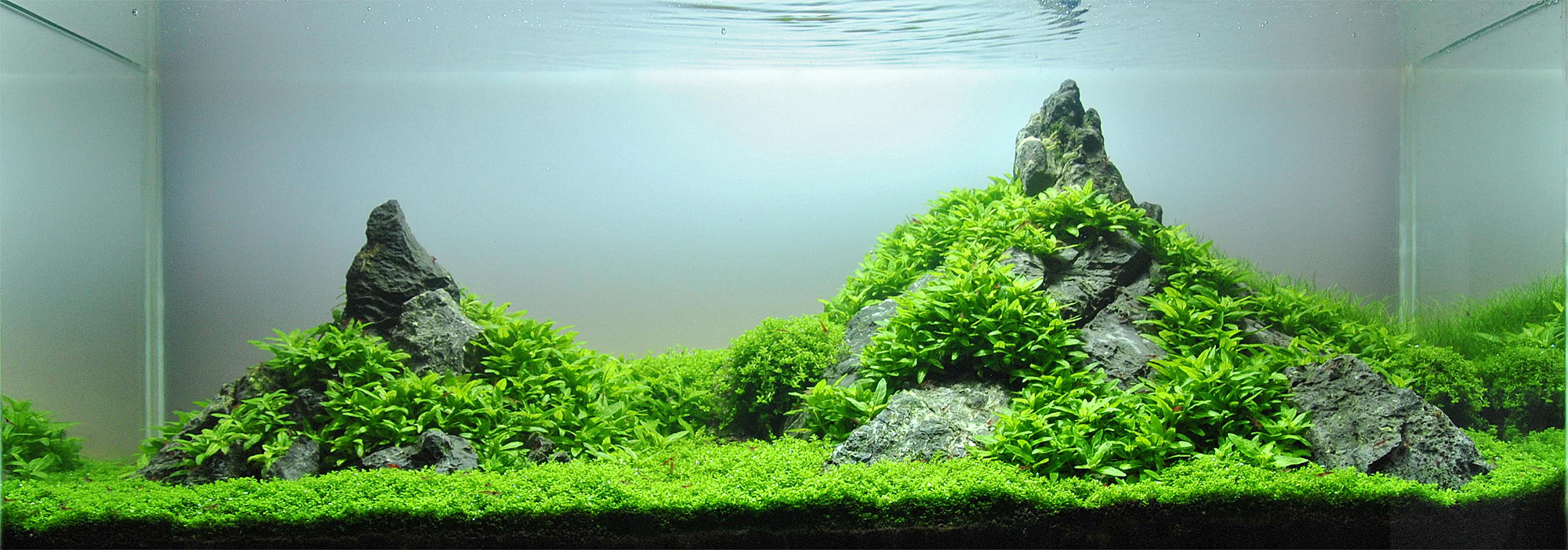
Carpeting plants
Do I need CO2 for a planted tank with carpet plants? This is a really common question. Most carpeting plants require high light and abundant dissolved CO2 when grown in water. These plants have difficulty coping due to their very tiny leaves. The smaller the leaf size of a carpeting plant, the greater its need for light and CO2. The most popular varieties of carpeting plants such as Hemianthus Callitrichoides, Monte Carlo, Dwarf Hairgrass and Glossostigma Elatinoides cannot thrive in their submersed form if there is no CO2 supplementation. They have no problem growing in the wild since they, as mentioned before, are mostly found growing above water (emersed) where they have access to the CO2 in the atmosphere or are growing in really pristine waters. Natural bodies of water such as streams may not have sufficient CO2 levels when tested but since the water is constantly flowing there is always CO2 for the plants to take advantage of.
One of the most notoriously popular plants known to be particularly sensitive with CO2 levels is the very elegant Hemianthus Callitrichoides (cuba). Due to its very tiny leaves, it requires abundant and stable CO2 supplementation. The best growth for these carpeting plants is when they are supplied with sufficient CO2. The light requirement for Hemianthus Callictricois may not be the same as with Monte Carlo as well as the others but CO2 supplementation should remain constant and at the right levels all the while when photosynthesis is taking place.
Glossostigma Elatinoides has been known for demand for high CO2 levels as well and it would be well worth the extra effort as these plants can take over an entire tank in a matter of weeks if CO2 and nutrients are supplied properly.
Stem plants
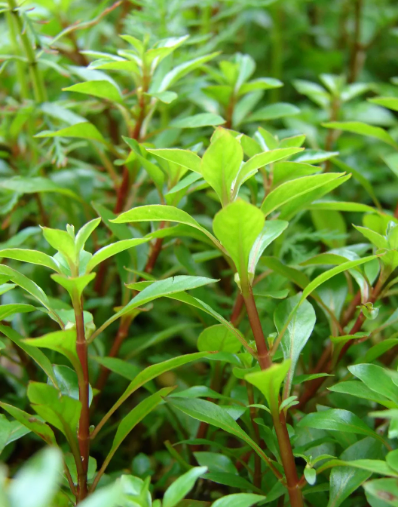
Here is a simple tip to identify if an emersed stem plant needs heavy CO2 supplementation or not. Take a look at the stem and not the leaves. If the stems are reddish then chances are you would need CO2 supplementation. The redder it is, the more CO2 it will require when grown submersed. This may not be applicable to all planted aquarium stem plants but most of those that would generally require CO2 supplementation can be classified in this way.
Stem plants are just a world on its own. Some people love them. Some people hate them but people who hate them do not hate them because they are not beautiful to look at. They are by far one of the most attractive and varied types of aquatic plants. Stem plants offer colour one might have never thought of to exist in aquatic plants and there are numerous cultivars being released each year it seems. There are pastel colours, bright reds, maroons, oranges, purples and pinks not to mention the different hues of green.
One aspect with these plants that the hobbyist needs to know in their planted aquarium is that it is now not a matter of having the plant flourish and thrive. It is now on how to make those bright colours appear while making these plants thrive on the tank. Some people use different combinations of light spectrums. Others use a different combination of micro and macro fertilisers. One thing is for certain. These colours will not appear easily if the proper level of dissolved CO2 is not achieved.
When dealing with stem plants in a planted tank, most especially in Dutch Style set ups, it is always wise to take care of the CO2 supplementation first. Make sure that every plant gets enough of it. With CO2 supplementation and a proper know-how on how to dose the tank, these plants should not have any problems with showing their true colours.
There is no secret formula on how to make the colours appear. It is just the right levels of CO2, proper water hardness and the right combination of nutrients. It is CO2 that always comes first though. Some Dutch planted tank do not even have fish just so higher CO2 levels can be injected and there will be no excess nitrates for the plants to deal with. These tanks have become plant only setups intended to nurture an echo system.
Red plants in particular become even deeper and richer in colour when the right CO2 levels are achieved. Oftentimes these plants would not demand a more intense lighting than the regular stem plants. It is a common misconception that for plants to become redder or for plants to show more rich colours the light intensity needs to increase. That is often not the case. Instead of trying to adjust lighting try to adjust CO2 levels and water circulation instead. Try to supply more iron and trace minerals. It could be possible that the dosing amount is correct but some plants could absorb those nutrients faster than the others. Spot dosing is probably best in this instance.
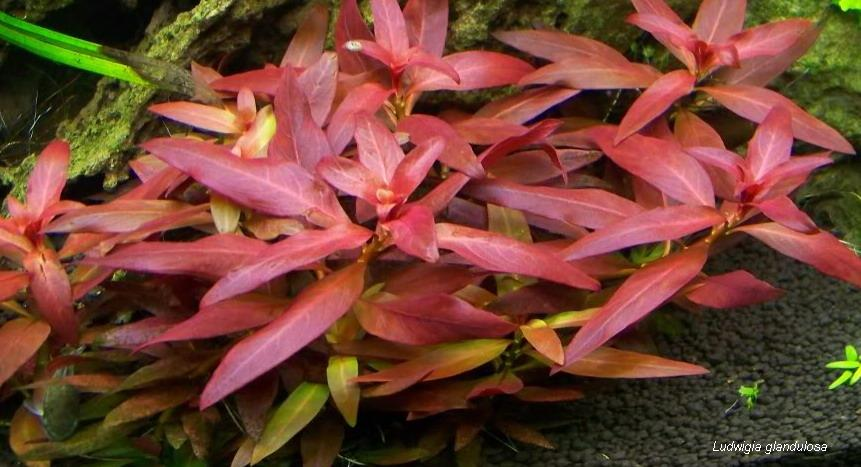
Flow as well as water temperature are important for the colours of these stem plants to really show. One may think that flow and temperature have nothing to do with CO2 supply but in reality, they are actually linked together. Colder water dissolved CO2 better. Proper distribution of the CO2 rich waters wherein all of the plants in the tank receive those waters will work better than increasing the rate of CO2 injection.
Bucephalandra
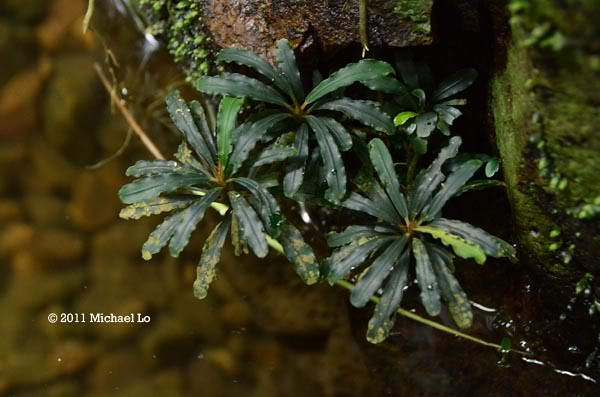
Many categorize Bucephalandras as Low Tech plants since they act like any epiphytic plant. They act more like Anubias. The fact is, Bucephalandra can be difficult. Transitioning this plant from emersed to submersed form almost certainly guarantees melting of the leaves. During this time CO2 injection is a great help. Like the coloured stem plants, Bucephalandras cannot show good colouring as well without proper CO2 levels. It may survive without CO2 supplementation but it will be a dull and unattractive plant. Add more CO2 in the water and suddenly the plant becomes as vibrant as any other stem plant/ Growth may be slow for these plants are slow growers but it is never slower than a tank without CO2.
All plants need CO2. Even low tech plants would not mind getting extra CO2 in their water. CO2 basically is food for a plant and it makes the plants grow faster. In photosynthesis (the process in which plants manufacture food) plants break down CO2 into Carbon and Oxygen. The excess Oxygen they release into the atmosphere while carbon is converted into sugar for energy. So with more Carbon dioxide supplementation, plant growth is way faster and the plants become healthier fast. The truth is there are only a handful of plants that can thrive without CO2 supplementation.
Summary
Some plants may be able to get by without it but it does not mean they will not be happier with it. The objective is not to find out which plant survives better. The main goal is to keep the plants healthier in your aquariums. The healthier the plants are, the better off the planted tank system will be.



